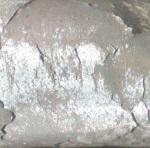Creep Damage

Creep damage refers to the deterioration of metallic samples and other materials when exposed to high temperatures and stress over extended periods. This phenomenon results in the gradual deformation and weakening of the material, ultimately leading to failure.
Creep damage can be divided into three phases:
Transient or primary creep: During this phase, the material undergoes initial deformation and strain rate, which progressively diminishes. The creep strain increases at a reduced rate, allowing the material to adjust to the applied stress.
Steady-state or secondary creep: This phase is marked by a consistent strain rate. The material strikes a balance between work hardening and recovery processes, resulting in a relatively stable rate of deformation. Of the three creep phases, this one tends to last the longest.
Accelerated or tertiary creep: In this concluding phase, the strain rate quickly escalates, causing the material to weaken considerably. The formation of microstructural defects, such as voids and cracks, can be attributed to this stage, eventually leading to the material's rupture and failure.
Creep damage is a vital concern in industries like power generation, refining, petrochemicals, aerospace, and automotive, where materials face high temperatures and stress for prolonged periods. To ensure the safe and dependable operation of equipment, engineers and materials scientists must consider creep damage when designing components and choosing materials for high-temperature applications.
|
Material |
Approx. Creep Damage Temperature Range (°F) |
Approx. Creep Damage Temperature Range (°C) |
|
Carbon Steel (Low alloy) |
800 - 1100 |
425 - 590 |
|
1.25Cr-0.5Mo (Low alloy) |
900 - 1200 |
480 - 650 |
|
2.25Cr-1Mo (Low alloy) |
950 - 1300 |
510 - 705 |
|
5Cr-0.5Mo (Low alloy) |
1000 - 1350 |
540 - 730 |
|
9Cr-1Mo (Low alloy) |
1100 - 1450 |
595 - 790 |
|
12Cr-1Mo (Low alloy) |
1200 - 1500 |
650 - 815 |
|
300 Series Stainless Steel (Austenitic) |
1100 - 1500 |
595 - 815 |
|
400 Series Stainless Steel (Ferritic) |
950 - 1300 |
510 - 705 |
|
17-4PH (Precipitation Hardening Stainless) |
1000 - 1300 |
540 - 705 |
|
Inconel (High nickel alloy) |
1400 - 2000 |
760 - 1095 |
|
Hastelloy (High nickel alloy) |
1400 - 2100 |
760 - 1145 |
|
Monel (High nickel alloy) |
1200 - 1700 |
650 - 925 |
|
Titanium Alloys |
800 - 1200 |
425 - 650 |
The creep damage temperature ranges mentioned above are approximate and can vary depending on the specific alloy composition, heat treatment, and service conditions.
